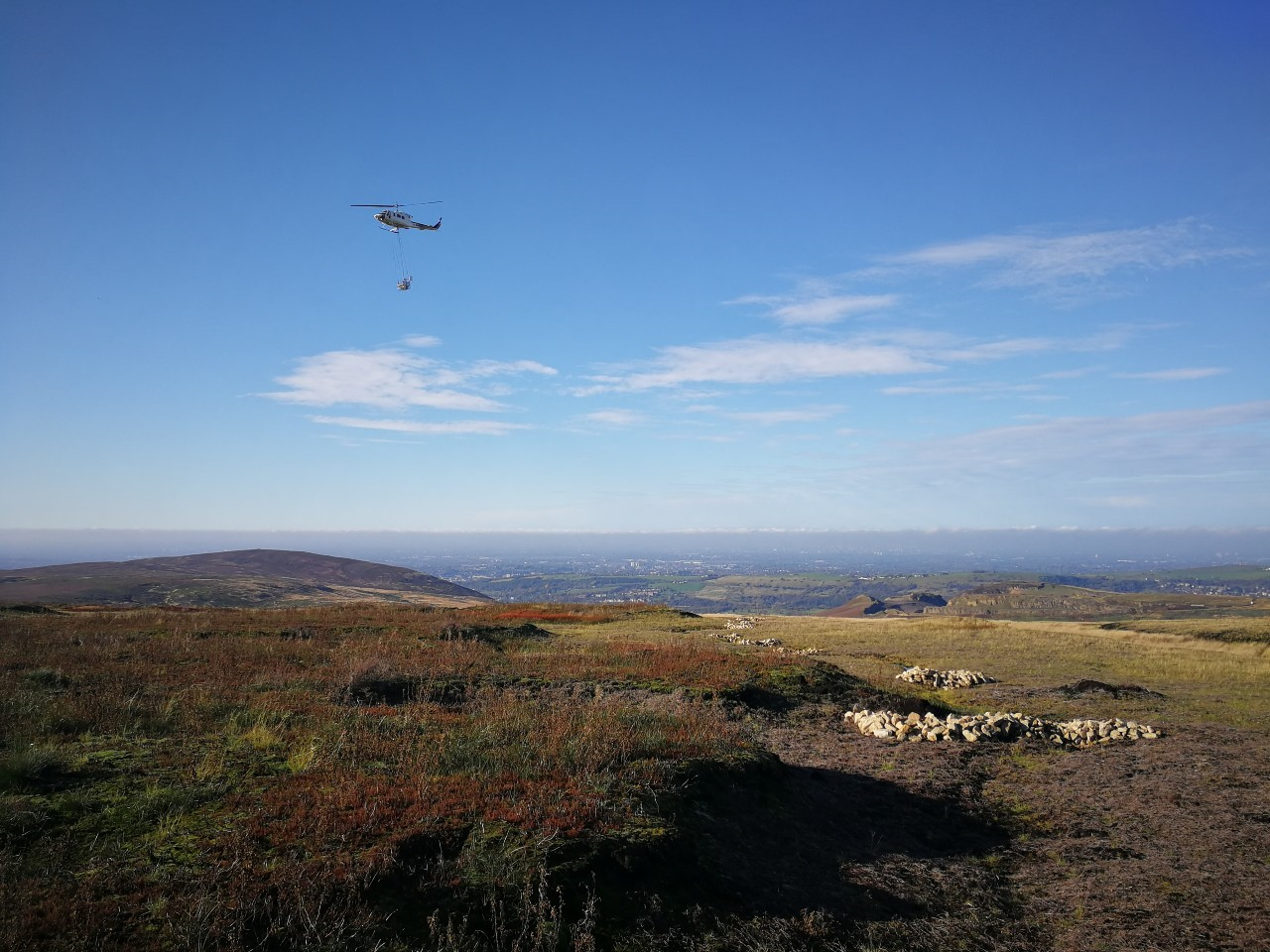This is another busy year for Moors for the Future Partnership’s conservation activities. With the building of over 6,000 dams and the spreading of over 3,500 bags of heather brash across the Peak District and South Pennine moors, these heavy materials need to get on to the remote moors and the Partnership is working with contractors to ensure it can continue protecting the environment despite the challenges of a second lockdown.
It takes months to build several thousand dams, and is a race against time to get the work finished before the birds begin to nest again in spring. The building work cannot start until the materials are on the moors, and the only feasible way to do this is to fly them in via helicopter. Helicopters don’t cause damage to the precious moorland landscape. They can also carry greater loads of materials much more quickly than ground vehicles can. Moors for the Future Partnership’s carbon audit has shown that the resulting healthy moorland environment will absorb more carbon than the helicopters will have emitted during conservation activities.
Similarly, 3,500 bags of heather brash need to be airlifted onto the moors to be spread onto the bare peat and begin to revegetate it. So that the helicopters are available later on in the season to airlift this heather brash, they need to be freed up. This means that the helicopters have to have finished the task of getting the materials for dams onto the moors before they can airlift the heather brash.
Adding to this complicated logistical operation, the COVID-19 pandemic has increased the urgency of the operations, but the team has been working hard to get the work completed as early as possible. Between August and October 2019, over 2,000 dams were constructed, but in August to October 2020, over 6,000 dams were built.

Chris Dean, head of programme delivery at Moors for the Future Partnership, says “the conservation works season is always a very busy time of year for our staff, contractors and partners. This year everyone involved is putting in a huge amount of effort to ensure that the work gets done despite the increased challenges. With six months of experience of our new ways of working, we have robust COVID secure procedures and processes that will ensure that everyone stays safe while completing this work that is vital to protect our moors.”
So as lockdown begins the skies above the moors continue to be busy with helicopters, working as quickly as they can, taking advantage of every good weather window. On the ground, meanwhile, socially-distanced works parties, working in “cells” are hard at work constructing the dams.
The dams are used to block drainage channels called grips and gullies to help slow the flow of water, reducing the risk of flooding, as well as helping to rewet the moors. This in turn improves the health of the moorland, providing a better habitat for the bog plants that live there.